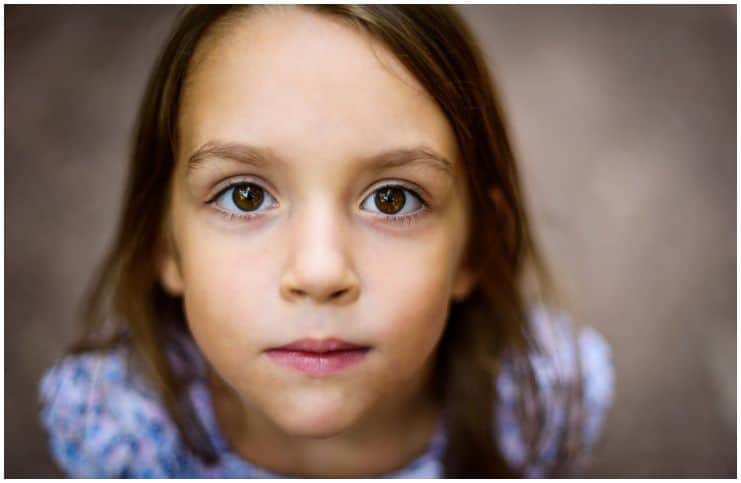Here are the top interesting facts about Angelman syndrome:
1 Angelman syndrome (AS), which used to be called the ”happy puppet” syndrome, is a rare genetic disorder with characteristic features that include – severe developmental delay, tremulousness with jerky movements of the legs and arms, severe speech impairment, inability to coordinate voluntary movements, and intellectual disability.
2 Approximately 80 percent of patients with AS have stereotyped behaviors, such as hand flapping. In addition, in the United States, 8 in 10 sufferers with AS have a disproportionate head circumference growth. Physical characteristics include light hair, flat, out-turned feet, and a curvature of the spine (scoliosis).
3 Most children with AS learn to interact and play with other children more slowly than healthy children. Nevertheless, the majority are very social children and interested in interacting with others.
4 The facial appearance becomes more noticeable in the 2nd and 3rd year of life, with the development of a thin wide mouth, pointed chin, and protruding tongue. The movement disorder may be observed as early as infancy at 6 months of age.
5 The characteristic findings of this syndrome are not commonly apparent at birth and diagnosis of this syndrome is frequently made between 1 and 4 years of age.
6 This condition was first identified in 1965 by Harry Angelman, an English physician, who investigated the symptoms and called it the ”happy puppet” syndrome. However, in 1982, two researchers (Frias and Williams) considered the term to be offensive for the patients, hence, the name of this rare condition was changed.
7 Both females and males are equally affected and almost all of the known cases are of Caucasian origin. In the United States, AS affects about 1 in 10,000 to 24,000 individuals.
8 A Danish study of children with AS in medical clinics, over a period of 8 years when there were 45,000 births, resulted in a prevalence of 1/10,000 cases. Also, a Swedish study of school-age children showed a prevalence of this syndrome of 1/12,000.
9 It is believed that the actual rate of prevalence of AS is much higher since some children are misdiagnosed with ASD (autism spectrum disorders) and CP (cerebral palsy).
10 The life expectancy of individuals with AS appears to be nearly normal.
Symptoms
11 People with this syndrome show evidence of delayed development by 6–12 months of age. They may also only be able to say a few words or may not speak at all. Nevertheless, most kids with AS will be able to communicate using signs, gestures, or other systems. Also, children with the syndrome often have spontaneous laughter.
12 Other symptoms of this syndrome include:
- balance or movement problems, such as – lack of coordination when walking or jerky movements;
- hypopigmentation (the absence of normal amounts of melanin) with light pigmentation of the skin, hair, and eyes;
- frequent smiling and excitability;
- physical deformity, like – microbrachycephaly, characterized by a small head size with flatness behind the head.
13 In a study published in the journal Nature Communications, the scientists concluded that the brain cells of patients with AS fail to properly mature, leading to a variety of other developmental deficits.
Causes
14 This syndrome is caused by a genetic mutation on chromosome 15.
15In approximately 70 percent of patients, the mother’s copy of this gene is missing in the child, hence, there is no active UBE3A gene in the child’s brain.
16 In about 11% of cases, there is a mutation in the maternal copy of Ubiquitin-protein ligase E3A.
17 A child inheriting 2 pairs of chromosome 15 from her or his father instead of only one is a rare cause of AS.
18Less than 5 percent of patients have inherited both chromosome 15 from their father instead of one chromosome 15 from each parent.
19 There is also a subgroup of patients with this syndrome who have no abnormality of the UBE3A gene.
20 A mother has a 50-50 chance of passing the defective gene on to her children, but only if she has signs and symptoms to carry the mutation.
21 While the loss of UBE3A causes AS, duplications within chromosomal regions which include the UBE3A gene have been linked to autism spectrum disorder, a developmental and neurological disorder.
Diagnosis
22 Making a diagnosis of this rare genetic disease can be challenging. Doctors usually look at a patient’s symptoms, medical history, and physical exam in order to make a diagnosis.
23 The diagnosis of this syndrome is also based on a genetic testing, that usually confirms the diagnosis in about 9 in 10 patients. A blood test can detect 80 percent of children with AS by examining the functioning of the UBE3A gene.
Cure
24 Due to its genetic relationship to autism, many healthcare professionals consider that curing AS will lead to cures for similar disorders.
25 However, in the present day, there is no available cure. Treatment is supportive in nature. For instance, patients receive intense therapies to help develop functional skills as well as physical therapy that may help them with walking.
Images credit – Shutterstock
READ THIS NEXT: Interesting Facts About Staphylococcus Aureus
References https://clinicaltrials.gov/ct2/show/NCT03358823 https://www.ncbi.nlm.nih.gov/pubmed/19874386 https://www.sciencedaily.com/releases/2017/04/170424152521.htm
